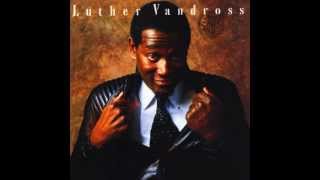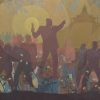
It’s hard to admit that there are things beyond the comprehension of the intellectual. It’s hard to explain the unexplainable. Not the death of Prince Rogers Nelson, a death we ultimately will understand. What I’m trying to make sense of is why, over the last 11 years, black America has had one devastating day after another over the deaths of so many black music artists who were, in our collective mind, supposed to live forever.
The 21st-century roll call of musical ancestry is impressive and disheartening. In April 2016 we are living in a world without Luther Vandross, Michael Jackson, Whitney Houston, Gil Scott-Heron, Godfather of Soul James Brown, Natalie Cole, Earth, Wind and Fire’s Maurice White and others. And now Prince, the seemingly forever young and healthy artist who mastered a score of instruments while becoming one of the most prolific songwriters and live performers in late-20th- and early-21st-century American music.
How was this now familiar cycle of collective pain and loss created?
It started here:
Artists share information, history and culture in spiritual ways that stick in memory. In the last century, the development of mass media technology—specifically the recording, reproduction and distribution of sound and, later, sound coupled with pictures—did something unexpected for musicians. The act of producing and distributing recorded sound made money for the former captors of Africans—and still does. Lots of it. It allowed, and still allows, audiences across the nation and, later, the world to get the same information, history and culture at the same time.
For the former slaves, this provided an amazing opportunity for them to pour all their spiritual power into platters that rotated and, therefore, resounded. And tales of faith and betrayal, love and hate, and, most importantly, hope and faith sprang from the collective African unconscious into recorded and shelved life. As the century progressed, the former enslavers became obscenely wealthy and powerful, while the formerly enslaved were given the superpower of transcending time and space—of being everywhere, instantly available on demand via a phonograph or a radio.
The pain we are experiencing is so acute because the music that was created, produced and reproduced was placed on a permanent loop. Yes, the music serves as the background of our life experiences, the marker of our joy and sadness, the instant language of our waking state. It speaks to us because it is us. But because of the culture’s technological permanency, it outlasts not only the artists but us as well; we now actually exist, and ultimately exit, around it, in a sense. Folks will be listening to Prince’s “Sign O’ the Times” when we’re all long gone.
We needed all of the artists we’ve lost. (I was just thinking Thursday morning, in a car with the radio blaring, about how much I missed Luther; little did I know the shock that awaited all of us in the afternoon.) They challenged society’s conventions—not for shock value, but to examine what and where they were in the context of their living. They understood irony, symbolism and subterfuge.
They opened up their artistry into more truthful territory in the 1970s and ’80s, after political and social movements pushed their former captors into a state approaching civilization. They believed that the purpose of a body of work was to give honor to the Most High. And now, time—through disease, addiction and perhaps just plain wear—is coldly snatching them, one by one. Each spiritual subtraction reminds us that they are not just perfected sound, but flesh and blood with a shelf date as temporary as ours. So we now have access only to what we have to accept as their—as our—past.
All is not lost, beloved. Stevie Wonder is still here. As is Aretha Franklin. And Smokey Robinson and Howard Hewett and Quincy Jones and George Clinton and Patti LaBelle and … our artists, living and dead, are our links not only to America’s past, not only to black music history, but also to the unseen but constantly felt connections they created. For at their best, our artists are conduits—living mediums—connecting the African spirit world of ancient drummers and kalimba players to morning and afternoon drive-time XM Sirius car sing-alongs.
Today’s and tomorrow’s inheritors of this collective cultural and spiritual mantle—contemporary artists such as Esperanza Spalding, Kamasi Washington and Gregory Porter, just to name three (please list yours below)—have a hell of a lot of responsibility before them. For they must not just make superior music worthy of their ancestors, proving that they can grow and expand themselves and their chosen musical genres. They now have to live up to generations of well-known and well-remembered people from the mass media era who, in essence, shaped the secular, spiritual and intimate lives of an entire people for a century. They will succeed if they remember where artists like the Purple One came from—a people with their own spiritual, social, political and personal points of reference—and continue the endless merging of those points with music and lyric.
Whenever African people sincerely attempted that union, the result, the sum, has always been a mysterious-but-accessible thing now known as soul. Every time. It always will. So we mourn today and tomorrow (and the next time this happens), while we wait patiently to fall in love again—to discover a new artist and feel the passion and joy of a song—an immediate moment that becomes unforgettable to the listener. (“A chair is still a chair, even when there’s no one sitting there … ”)
Listen. The next immortal notes are coming, and they will be as powerful as anything that has come before. Because we know it’s just a continuous cycle from that eternally funky African corner of the Eternal Source of All Things.
Todd Steven Burroughs, an independent researcher and writer based in Newark, N.J., is the author of Son-Shine on Cracked Sidewalks, an audiobook on Amiri Baraka and Ras Baraka through the eyes of the 2014 Newark mayoral campaign. He is the co-editor, along with Jared Ball, of A Lie of Reinvention: Correcting Manning Marable’s Malcolm X and the co-author, with Herb Boyd, of Civil Rights: Yesterday & Today.

Preview YouTube video Gregory Porter – Liquid Spirit

Preview YouTube video Jimi Hendrix Purple Haze

Preview YouTube video Luther Vandross – A House Is Not A Home
















